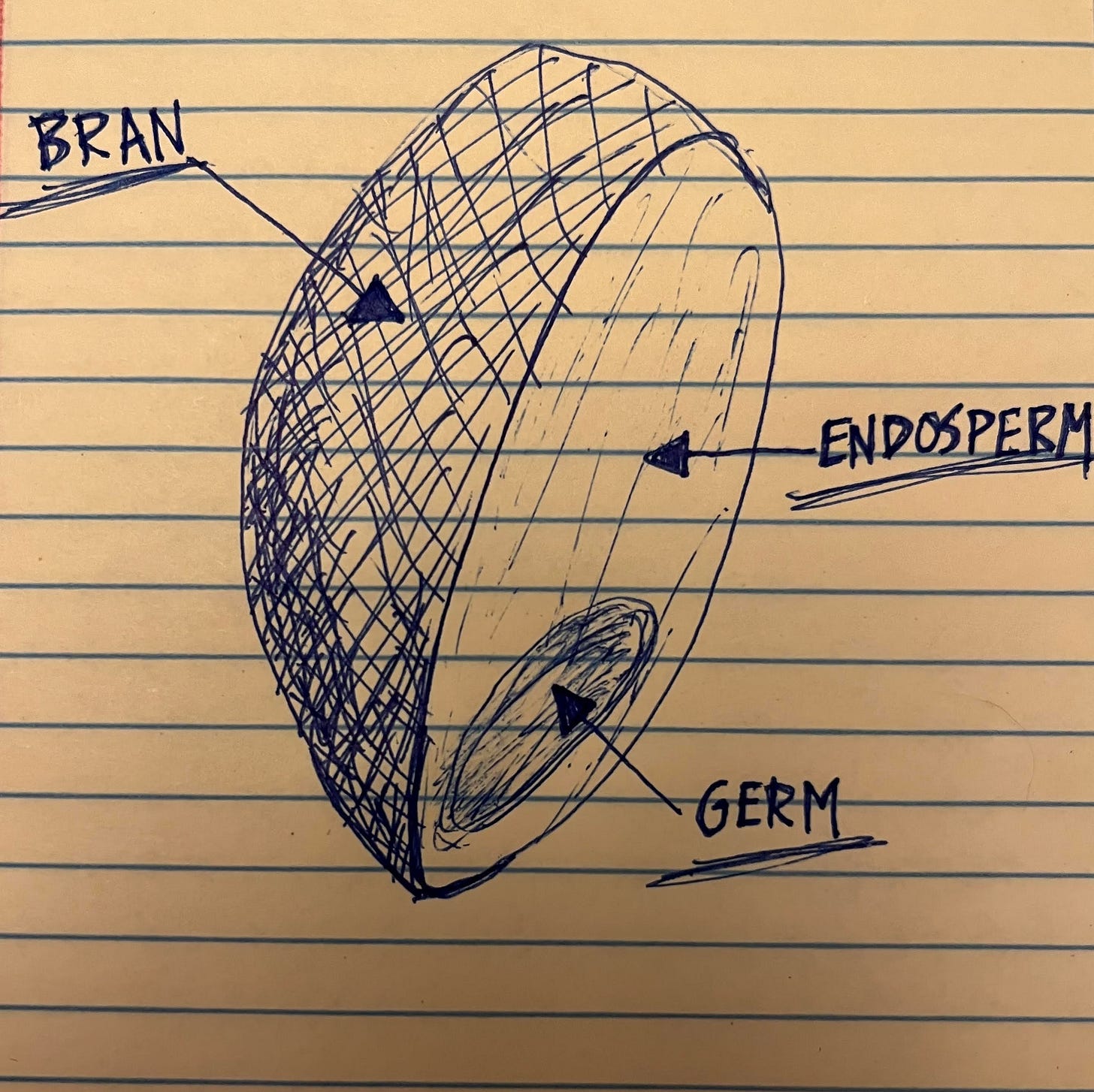Dear Dad,
Imagine that you’re the team’s starting Quarterback. The game is on the line and your team is down by 5 points. It’s your ball, first down on the two-yard line. Do you like your position?
Well, hopefully your answer requires more information, specifically, “Umm, which two yard-line?”
Is this the two yard line going in, an arm stretch away from a TOUCHDOWN? Or, is it the opposite two yard line with 98 long yards standing between the football and the Promised Land?
Next time you read about, think about, or receive advice about eating carbohydrates you must engage the same analysis. Like hiking the ball from the two yard line is remarkably different depending on the side of the field; so are “carbs” remarkably different dependent on their original food source, processing, and structure. For this reason, “carbohydrate” is likely the most maliciously defined word in all of nutrition.
Foods rich in carbohydrates broadly range from candy bars, pizza, and pasta to fruits, vegetables, whole grains, beans, and legumes. It doesn’t take a genius to realize these foods are vastly different and understanding the difference is imperative to our overall health. Sadly, much propagated “nutrition” advice lumps all carbohydrates in the same category and recommends constant moderation, restriction, and sometimes complete elimination. Such a view is misguided and completely overlooks the surrounding circumstances—like which two yard line the ball is on.
The difference in carbohydrates, can be broken down in terms that you have likely heard before: “simple” or “complex” carbohydrates. While the terms may be familiar, I’m guessing the meaning behind them is not. Take a look at the diagram below depicting a “whole grain.”
While this diagram is specific to “whole grains,” such as wheat, barley, or rye, the principles I’m about to explain are pretty consistent throughout the entire field of carbohydrates.
When a food is marked as a “whole grain,” or a complex carb, that distinction means that the entire grain was used to make the food; or, in the best case scenario the entire grain is the food. For example, whole grain flour mashes the entire grain down into a floury powder. A single piece of “brown rice” is a whole grain by itself; just as a piece of quinoa, farro, or an oat. These are all examples of “complex” carbohydrates.
On the other hand, “simple” carbohydrates are not made from the “whole grain.” Simple carbs are made by stripping away the outer layer of “bran” and the inside layer of “germ” (see above) through a milling process and then making food products using what remains—the “endosperm.” A “white” flour mashes only the endosperm into a floury powder. White rice has removed the outer layer of bran, same goes for pastries and white pastas.
So why go through all the hassle of food processing?
Well, a piece of white bread, a breakfast pastry, or even your favorite white pasta certainly does/can have a smoother and fluffier mouth feel and last longer in the pantry than its whole grain counter-part. This is because the fiberous bran is course and the nutrient stuffed germ spoils sooner than the endosperm. By stripping the bran and the germ in favor of mouthfeel and shelf life, the food product also looses the fiber filled bran and the nutrient packed germ. I will write more later about the vital importance of fiber and other micronutrients; but first.
When food processing leaves only the endosperm what nutritional value is left to be eaten? Well in short, not many nutrients are gained but there is readily available energy also known as calories. By consequence, a diet rich in simple carbohydrates leaves us well fed yet under-nourished—one of the most paradoxical conundrums of our time.
This crisis was developed by food companies then happily exploited. Companies learned long ago that many eaters prefer foods that are softer and fluffier and that last longer on the shelves to foods with a little more grit and an expiration date. It just so happens to be a side-benefit, to the food companies of course, that these refined simple carbs, aptly defined as “empty calories,” leave consumers under nourished and therefore still hungry and looking to eat more. Which they often do.
Too often we equate eating only to our emotions and feelings, forgetting that there are very scientific biological processes at play. If your body is “starved” of nutrients it will sound the hunger alarms. It’s of little consequence, and your price to pay, if you have already eaten a surplus of calories that had little nutritional value.
Conversely, whole grains and their other complex carb friends provide calories that come packed with a wide array of nutrients and fiber. Vitamins, phytochemicals, and antioxidants found in the “germ” provide essential nutrients needed to fight disease and sustain health and fiber found in the “bran” slows down digestion making your stomach fuller for longer.
So should you avoid carbs? Well, half and half. Simple carbs give you a lot of calories for little nutritional value and should be thrown out; but complex carbs provide hearty and nutrient rich calories. So, when it comes to carbohydrates I will employ one of the oldest, weirdest, yet familiar sayings: Don’t throw the baby out with the bathwater.
With Love,
JSR





